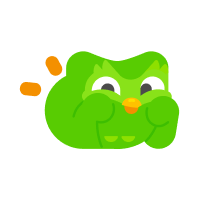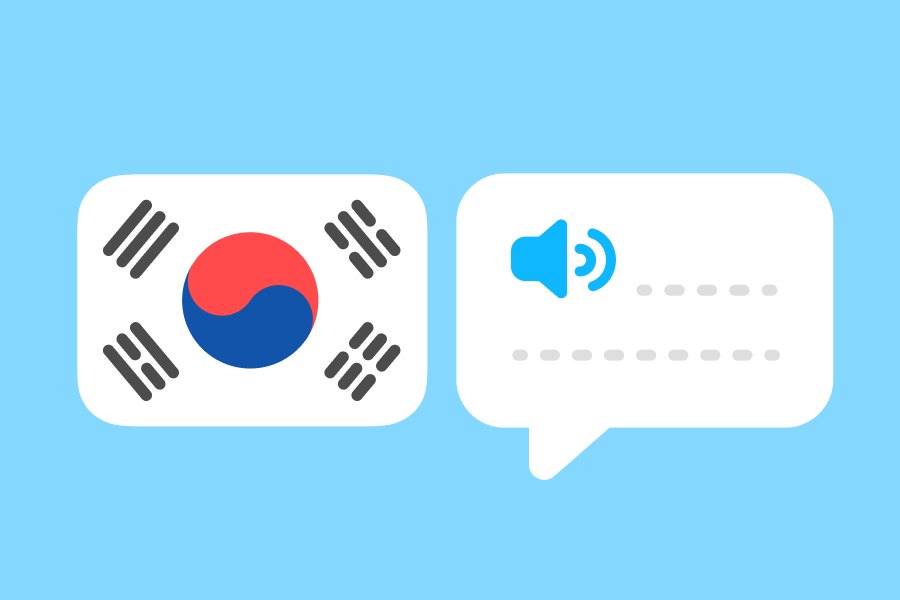Annyeong, Duolingo learners! If you’re interested in learning Korean, you might already know a few Korean words. Maybe you picked up new words while watching a Korean drama like Squid Game or listening to your favorite K-pop bop by BTS.
You’re not alone! Korean has been growing more and more popular in recent years, mainly thanks to the rising popularity of Korean soap operas (also known as K-dramas) and K-pop. But if you still need convincing… here are a few fun facts about the language, its history, and why you should try it for yourself!
Korean is one of the fastest growing languages in the world
Korean is the official language in only a handful of regions: South Korea and North Korea on the Korean peninsula, and parts of Northeastern China where many Koreans live.
According to the 2021 Duolingo Language Report, Korean is the 7th most popular language to study around the world, and Korean is one of the fastest growing languages on Duolingo in countries as diverse as Brazil, France, Germany, India, and Mexico. New Korean learners are joining an impressive, passionate community studying the language!

But until the 20th century, Korean’s writing system was mostly used by women
The Korean alphabet is said to be one of the easiest writing systems in the world. But the Korean language didn’t have a writing system of its own until the mid-15th century. It had to use Chinese characters to convey the original Korean meaning in written records.
Since the two languages have completely different grammar and word order, understanding what those writings originally meant in Korean required extensive education. Picture yourself using hieroglyphs to take notes in English class! This meant reading and writing was accessible only to the elite class, usually male aristocrats, who could afford to spend years learning thousands of Chinese characters. Eventually, Korean got its own writing system, known as Hangul, which you can read more about here!
But it wasn’t until the modern era that Koreans officially started using Hangul. Chinese characters were still considered the more formal and sophisticated choice among the ruling class until 1894, when the Joseon Dynasty designated Hangul as Korea’s official writing system in an attempt to modernize the nation.
Then how did Hangul survive for centuries in between? Due to its simplicity, Hangul was more popular among commoners, especially women of all classes who had fewer opportunities to get educated. Women kept diaries and wrote letters in Hangul, and many looked down upon Hangul as “women’s writing.” Today, those Hangul writings are invaluable historical sources!
Now, don’t you want to give this fascinating language a try? If you still need convincing, here are a few linguistic features of Korean that new learners will get to tackle!

Korean has different levels of politeness
If you’re an English speaker, you don't use special endings, verb forms, or particles depending on the age or position of the person you're talking to. But when speaking Korean, there are differing levels of formality that take into account the person’s “status” in life (like a friend vs. a boss) and how well you know them (a friend vs. a grandparent), and these speech levels can change multiple things in a sentence.
For example, if you’re asking someone, “Have you eaten?” you’ll make changes based on who you’re asking!
| Casual (to a friend) | Bap Meogeosseo? |
| Casually polite (to someone older than you) | Bap Meogeosseoyo? |
| Formal (to your colleague or someone older) | Siksa hasyeosseoyo? |
| Slightly more formal (to your boss's boss) | Siksa hasyeosseupnikka? |
| Very formal (to an elderly family member) | Jinji japsusyeosseoyo?? |
| Extra formal (to a government official) | Jinji japsusyeosseupnikka? |
Or even saying "yes"...
| Casual | eung |
| Formal | ye / ne |
Northern twang, southern drawl… Korean has six dialects!
The South Korean standard language is based on the dialect of Korea’s capital city, Seoul. And there are six major dialects across the Korean peninsula named after the provinces where they're spoken: Hamgyong, Pyongan, Central (broken down into Gyeonggi, Hwanghae, Chungcheong, Gangwon), Gyeongsang, Jeolla and Jeju.
These dialects are characterized by unique intonations, different vocabulary, and distinct sentence endings! Native Korean speakers can easily distinguish the regional differences and can tell which province someone is from.
For example, there are many variations of the word “cat” in each dialect, and some regions even have multiple different words!
| Standard | Go-yang-I |
| Hamgyong | Go-naeng-I |
| Pyongan | Gwa-i, Go-naeng-I |
| Central - Gyeonggi | Gwae-i, Gwaeng-I |
| Central - Hwanghae | Go-i, Gwae-I, Go-nya-I |
| Central - Chungcheong | Go-i, Go-nya-i, Kwaeng-i, Go-nyaeng-i |
| Central - Gangwon | Go-nyaeng-i, Gwoe |
| Gyeongsang | Gwoe-saeng-i, Sal-jjin-i |
| Jeolla | Go-ning-i, Gweng-i, Gwae-ya-i, Gwoe-de-gi |
| Jeju | Gwe, Go-naeng-i |
For learners, it makes sense to focus on just one dialect, like the Seoul-based standard Korean! Sadly, the other dialects are dying out as the modern generation is educated in standard Korean.
A few fun ways to study Korean
1. Create a K-pop playlist or K-drama binge list.
If you decided to learn Korean because of your love for K-pop or Korean shows, they can also help you practice your listening and pick up new vocabulary. Make a playlist of your favorite Korean singers, binge-watch K-dramas on Netflix, and pay attention to what the actors are saying. They can teach you casual and slang words!
2. Korean YouTube is your friend… and it’s free.
Many K-pop groups also upload their own reality shows for free on YouTube, where you can watch members of your favorite K-pop group have everyday conversations in Korean. That’s the best of both worlds!
YouTube also offers Korean content beyond K-pop and K-dramas. If you’re a foodie, genres like mukbang (a Korean abbreviation for ‘eating shows’) can introduce you to delicious Korean dishes and related vocabulary. If you enjoy watching beauty YouTubers, give Korean makeup tutorials a try. They’re a popular genre in Korea as well, thanks to the country’s booming cosmetics and skincare industry.
3. And of course… study with Duolingo!
Like any language, Korean requires frequent exposure and lots of practice, so keeping up with your lessons on Duolingo is a great way to study. The Korean course has a special tab for learning Hangul where you can practice reading and forming Korean characters! It's a fun, simple way to build up your reading skills, which will come in handy for your next K-drama.
If you loved this post, dive into the history of the Korean language next! Then, meet the BTS fans who are learning Korean on Duolingo. And stay tuned for more posts that will help new and seasoned Korean learners practice this dynamic language!
